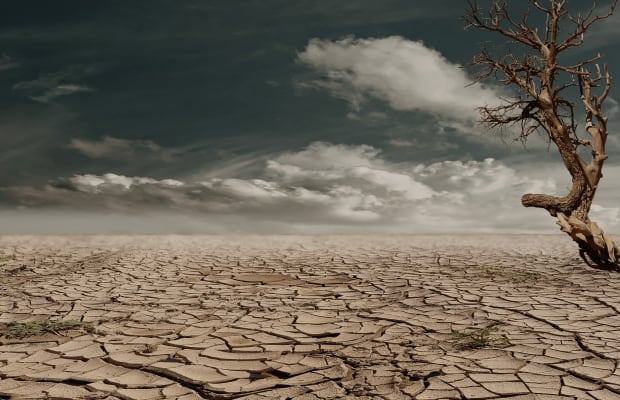Climate change is causing the planet to evolve at an alarming rate. Thanks to musicians and instructors at Full Sail University in Winter Park, Florida, climate change can also be heard.
Musicians from Full Sail have teamed up with USA Today to construct music based on more than 100 years of data on climate change in various U.S. states, including Arkansas, Michigan, Pennsylvania, Ohio, and Iowa. The data found that east of the Rocky Mountains more rain was falling than ever before, but in the west rain is becoming more scarce.
Each composer approached the project differently with various musicalities. They all used real rain sounds throughout their pieces.
Pennsylvania by Dr. Timothy Stulman
In Dr. Stulman's composition, he used a melodic line that represented peak rainfall and dry years for the state of Pennsylvania. To represent the low and high parts of the data, Dr. Stulman's composition raises and lowers in pitch. Each year is equal to two seconds of music in this composition.
He assembled various recordings of wind, thunder, and rain and intertwined them with flute and cello melodies. The higher crests of the data are played with a flute while lower parts of the data are played by three cellos in descending melodies.
"I wanted to create my own virtual storm so that I would have more granular control over its intensity. So rather than using a single recording of a storm, I used individual sounds of rain, wind, and thunder," Dr. Stulman told USA Today. "If there was a really high rainfall year, I would choose recordings of intense rainfall, strong winds, and mix them with loud thunderclaps. So it's not a single recording of a storm, but rather various storm elements blended together based on the rainfall data."
Tennessee by Thomas Owen
Thomas Owen is the department chair for the recording arts program at Full Sail University and the associate course director of interactive audio.
Recommended Articles
Skee Mask Removes Music From Spotify After Founder's Investment In AI Technology
Skee Mask said his music will become available on Spotify as soon as it starts "becoming honest & respectful towards music makers."
Armin van Buuren Curates Spotify Playlist With His Favorite Trance Anthems of All-Time
Get nostalgic dose of Armin van Buuren's trance favorites with this huge Spotify playlist takeover.
Excision Drops "Onyx" Album Single With Dion Timmer and Donna Tella, "End Of The World": Listen
The Subsidia label head linked up with Timmer and Alexis Donn in 2020 for the soaring single "Salvation."
In his composition Owen used real sounds of wind and rain from the Smoky Mountains in Tennessee. This song inspired him after a trip to Tennessee to visit his family for Christmas last year. The snow turning his family's home into a winter wonderland brought in fresh memories.
"You see these huge spikes of heavy rainfall," Owen told USA Today. "Sonifying that it's really easy to hear and be able to tell the difference in climate."
You'll notice that in Owen's composition, the wind and rain gets louder during the wet years in Tennessee's chart.
Arkansas, Iowa, and Michigan by Marc Pinsky
Marc Pinsky is a course director in the audio production program at Full Sail University. His passion is interactive audio, which is why he took upon himself to compose five pieces for five states: Arkansas, Iowa, Michigan, Ohio, and Pennsylvania.
Pinsky used a continuous tick for each year. The top 10 driest are highlighted with low plucked strings, and the wettest years are highlighted with high plucked strings.
He took each decade and put them on a scale between 1 and 13. Using the violin as his main instrument, Pinsky associated each number with a note on the C minor scale. As the rainfall increases, the pitch for the violin increases and decreases when the rain decreases. The rain layer played throughout also corresponds to the pitch and volume.
Pinsky chose the violin because it reminds him of a raindrop. "It just really, in my opinion, penetrates the soul and that melody line just didn't sound right on any other instrument."
You can listen to the full songs via USA Today.





